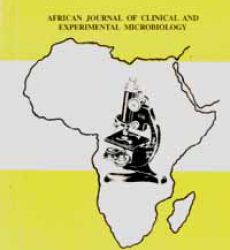Abstract
Several epidemiological studies have reported high prevalence of HBsAg among pregnant women in Burkina Faso. They used various algorithms, as it is also done for the routine diagnostic. Knowing this antigen carriage rate in such a population or in other clinic attendees is important for the implementation of a national immunisation programme and the monitoring of patients with hepatitis B. Often, the screening tests were not confirmed in spite of the existence of known false positive and false negative results. The aim of this study was to determine a more accurate prevalence of HBsAg, among the pregnant women in Burkina Faso. From October 2006 to January 2007, blood samples were collected from 1139 pregnant women. Each sample was analyzed for HBsAg, using two assays and according to manufacturers’ instructions vis, Hepanostika®HBsAg Uniform II B9 (Bio-Mérieux; France) and HBsAg (V2) Abbott AxSYM® system (Abbott Diagnostics). All the positive samples were tested with a confirmatory neutralization assay- Hepanostika®HBsAg Uniform II B9 Confirmatory (Bio-Merieux). The mean age of the pregnant women was 24.85years [range: 15-45years] and the age range of 20-24 (37%) and 25-29 (25.4%) years were the most represented. The overall rate of HBsAg-positive pregnant women with the two screening assays was 20.9%. The HBsAg detection rate was significantly higher with Hepanostika® UniformII B9 (16.9%) than with HBsAg (V2) AxSYM system assay (12.1%), with P<0,0001. The general seroprevalence of HBsAg was 9% after the confirmatory neutralization testing, with 56.7% of false positive results: this difference was statistically significant (P<0.0001). The rate of HBsAg positive pregnant women was higher in the age range of 25-29years than in the others; however, this difference was not statistically significant. In an epidemiological approach, the results found in this study confirmed the Burkina Faso belonging to the high endemic carriage area for HBsAg. The results showed that in an individual approach, the confirmatory assay is necessary and there is a need to implement more accurate algorithm for the routine diagnostic in patients.
Key words: HBsAg, confirmatory assay, prevalence, pregnant women, Burkina Faso.
Download full journal in PDF below

